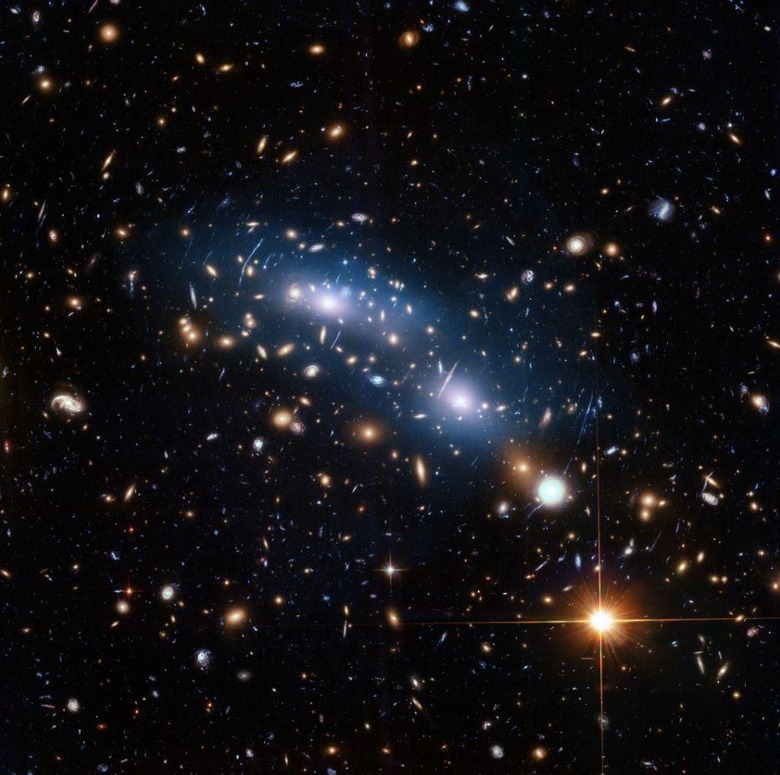Mesmerizing Hubble Dark Matter Breakthrough Reminds Us Science Can Be Stunning
Dark matter is still a pretty mysterious topic, but a new discovery may lead scientists to learn more about it. In looking at images of galaxy clusters taken as part of the Hubble Frontier Fields project, scientists at the University of New South Wales discovered a new method of tracing the distribution of dark matter. This discovery could very well offer new insights into what dark matter is.
Though dark matter is a phrase you hear fairly often when it comes to space talk, it's something that we still haven't observed in our universe directly. Still, many scientists accept the hypothesis that dark matter not only exists but makes up the vast majority of matter in the universe, so they're constantly searching for clues that could lead to a breakthrough. One of those clues, it turns out, comes from the intracluster light that develops around densely packed areas of galaxies.

In a news post discussing this discovery, NASA describes intracluster light as "the diffuse glow between galaxies in a cluster." In research published in the Monthly Notices of the Royal Astronomical Society, those scientists at the University of New South Wales say that intracluster light traces the distribution of dark matter, and it does so with more accuracy than traditional measuring methods.
Study co-author Mireia Montes told NASA that this discovery is exciting in part because it's a more efficient method of tracing dark matter as well. While scientists typically use spectroscopy to measure dark matter, this method only requires the deep imaging capabilities of Hubble and other telescopes. Therefore, the process of studying intracluster light will speed up, and we'll presumably be able to learn more about dark matter in a shorter period of time.
From here, the group of researchers responsible for this find plan to return to the original six galaxy clusters they studied to see if the accuracy of this method holds up within a larger radius of observation. They'll also take a look at deep imaging from other space telescopes and see if this method of tracing dark matter can work at the scale of an individual galaxy. The hope is that this discovery accelerates our learning when it comes to dark matter, so stay tuned for more.
